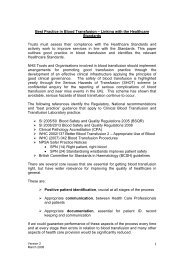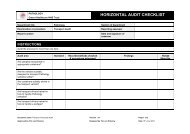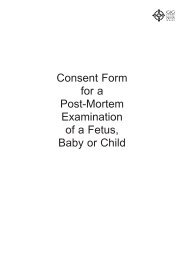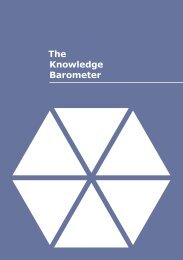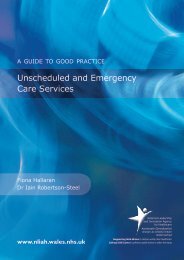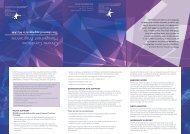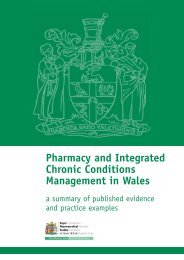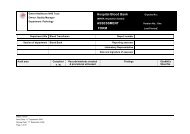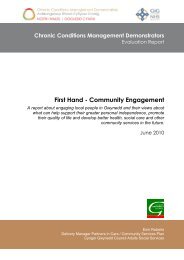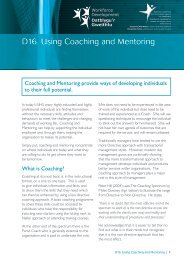Time-Driven Activity-Based Costing
Time-Driven Activity-Based Costing
Time-Driven Activity-Based Costing
Create successful ePaper yourself
Turn your PDF publications into a flip-book with our unique Google optimized e-Paper software.
Endnotes1The cases include Schrader Bellows (186-050), John Deere Component Works (A) and (B) (187-101 and –187-108), Siemens EMW (A) (191-006), and Kanthal (A) (190-002). Papers include R. Cooper“The Rise of <strong>Activity</strong>-<strong>Based</strong> <strong>Costing</strong>- Part One: What is an <strong>Activity</strong>-<strong>Based</strong> Cost System?” Journal of CostManagement (Summer 1988): 45-58; R. Cooper “The Rise of <strong>Activity</strong>-<strong>Based</strong> <strong>Costing</strong>- Part Two: When DoI Need an <strong>Activity</strong>-<strong>Based</strong> Cost System?” Journal of Cost Management (Fall 1988): 41-48; R. Cooper “TheRise of <strong>Activity</strong>-<strong>Based</strong> <strong>Costing</strong>- Part Three: How Many Cost Drivers Do You Need, and How Do YouSelect Them?” Journal of Cost Management (Winter 1989): 34-46; R. Cooper and R. S. Kaplan, “MeasureCosts Right: Make the Right Decisions,” Harvard Business Review (September-October 1988).2Steven Anderson “Should More Companies Practice their ABCs?” (September 1997)3C. Argyris and R. S. Kaplan, “Implementing New Knowledge: The Case of <strong>Activity</strong>-<strong>Based</strong><strong>Costing</strong>," Accounting Horizons (September 1994): 83-105.4Steven Anderson and Richard Drobner, “Innovative Approach to ABC Delivers Profound Insightinto Process Costs” (2002)5According to Acorn Systems, Inc., a simple calculation for database size is # activities x total #cost objects (e.g. line items) x # months = 150 x 600,000 x 24 = 2.16 billion items6Steven Anderson “Should More Companies Practice their ABCs?” (September 1997)7Robin Cooper and R. S. Kaplan "<strong>Activity</strong>-<strong>Based</strong> Systems: Measuring the Costs of ResourceUsage," Accounting Horizons (September 1992): 1-13; and “Measuring the Cost of Resource Capacity,”Chapter 7 in R. S. Kaplan and R. Cooper, Cost & Effect: Using Integrated Cost Systems to DriveProfitability and Performance (Boston: HBS Press, 1998): 111-136.8The modified approach was described in Chapter 14 of Cost & Effect: 296-299. It was alsodescribed by Acorn Systems in “Should More Companies Practice their ABCs?” (September 1997)9R. Cooper, “The Two-Stage Procedure in Cost Accounting: Part Two,” Journal of CostManagement (Fall 1997): 39-45.10If different amounts of resources are used each time an activity is performed, then even timeestimates (duration drivers) may not be adequate. In this case, an intensity driver that directly chargesresource cost for each incident of the activity may be required. See Kaplan and Cooper, Cost & Effect: 95-99, for discussion on the nature and trade-offs of transaction, duration, and intensity cost drivers.11Kaplan and Cooper, “Measuring the Cost of Resource Capacity,” Cost & Effect.12By assumption, the $560,000 of expenses are committed for the upcoming period; they are notexpected to vary based on the actual number of customer orders processed, complaints handled, or creditchecks performed13Steven Anderson “Should More Companies Practice their ABCs?” (September 1997)14Alternatively, at considerably higher expense, the company could have used a duration driver tomeasure the actual length of time required to perform each instance of the activity.15The company is Acorn Systems (www.acornsys.com) .16ID Magazine, April 7, 200318




